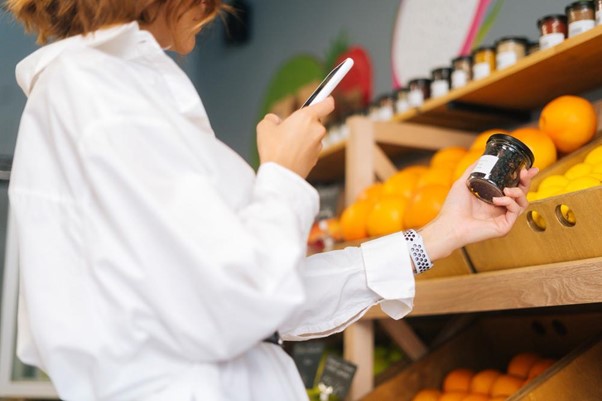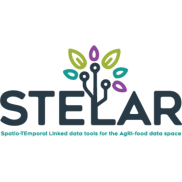The Future of Food Safety: Emerging Technologies and Trends
In the past, ensuring food safety primarily relied on traditional methods like manual inspections and standardized hygiene practices. While effective to a degree, these approaches often lagged in quickly identifying and preventing foodborne contamination, leading to outbreaks that endangered public health and damaged consumer trust.
The COVID-19 pandemic further highlighted the vulnerabilities in our food safety systems, emphasizing the urgent need for more resilient and advanced solutions.
In this article, we will explore these exciting advancements and how they are shaping the future of food safety.
Transforming Food Safety with Cutting-Edge Technologies
Today, innovations such as blockchain, advanced sensors, and AI-powered analytics are revolutionizing how we safeguard our food supply. These advancements enhance traceability and enable real-time contamination detection and predictive quality control, ushering in a new era of safety and transparency in the food industry.
Empowering Traceability and Open-source with Blockchain and IoT
Both traceability and open-source tools play a pivotal role in ensuring safety and transparency of the food supply chain. Technologies like blockchain and Internet of Things (IoT) are leading this transformation, providing a decentralised and real-time monitoring system, allowing stakeholders to track the journey of food products from farm to table.
Blockchain’s immutable ledger records every transaction and movement of food products, ensuring that data is tamper-proof and accessible in real time. And with agricultural blockchain platforms often being built with open-source codes, allowing other curious and forward-driven developers to build upon them, there is room for constant innovations in food traceability. IoT devices, including smart sensors and RFID tags, continuously monitor and transmit information about the condition and location of food items throughout the supply chain.
Together, these technologies enable precise traceability, helping to quickly identify and address any issues of contamination or fraud, thereby enhancing consumer trust and regulatory compliance.
Synergising Traceability with Predictive Analytics and AI
The integration of traceability technologies with predictive analytics, machine learning (ML), and artificial intelligence (AI) is creating a powerful synergy in food safety management. By harnessing the wealth of data collected from traceability solutions, ML and AI algorithms can analyze patterns and predict potential contamination risks.
This proactive approach not only enables the tracking of food items’ origins and movements but also anticipates and prevents safety issues before they escalate. Thus ensuring a transparent, accountable, and intelligent food supply chain that enhances both food quality and consumer trust.
How Can Robotics and Automation Elevate Food Safety?
Robotics and automation are reshaping the landscape of food safety, introducing unprecedented precision and efficiency to the industry. Automated systems streamline food processing and handling, reducing the risk of human error and contamination. Equipped with advanced sensors and AI capabilities, robots can perform tasks such as sorting, packaging, and quality control with exceptional accuracy.
These technologies enhance the consistency and quality of food products and ensure adherence to stringent hygiene standards, minimizing the potential for foodborne illnesses.
The future of food safety is further strengthened by integrating robotics with other emerging technologies such as IoT and AI. For example, robotic systems can be connected to IoT networks, allowing real-time monitoring and data collection throughout production . This data can then be analyzed using AI to identify potential issues and implement corrective actions proactively.
. This data can then be analyzed using AI to identify potential issues and implement corrective actions proactively.
Opportunities for Improvement in Food Safety Technology
While significant progress has been made in leveraging technology to enhance food safety, there are still opportunities for improvement, including:
- Improving interoperability of technologies across the food supply chain for seamless communication and data sharing.
- Improving data accuracy and standardization is essential, as inconsistent data can hinder effective tracking and tracing.
- Innovating sensor technology to enhance detection capabilities for a wider range of contaminants and hazards.
- Enhancing accessibility to food safety technologies, especially for small-scale producers and developing regions, to ensure global inclusivity.
- Conducting ongoing research and development in robotics, AI, and predictive analytics to create more advanced and integrated solutions for proactive risk management and quality assurance.
Introducing STELAR: Harmonising Agrifood Data Management
The biggest challenge facing the current agrifood data landscape lies in its scattered nature, with data dispersed across various sources and formats. This fragmentation, coupled with subpar dataset search capabilities and data unfit for AI tasks, presents a significant challenge in leveraging the full potential of advanced analytics and machine learning algorithms.
However, this is where STELAR steps in. As a novel platform designed specifically for the agrifood sector, STELAR bridges the gap between raw data and AI readiness. STELAR transforms scattered and unstructured data into actionable insights by providing tools and workflows for publishing, discovering, and processing metadata about datasets.
By harnessing state-of-the-art techniques, such as structured information extraction from food safety reports and fusion of satellite and field sensor data, STELAR empowers stakeholders to improve crop classification, predict yields, and construct suitability maps with unprecedented accuracy and efficiency.
Conclusion
Navigating the complex landscape of agrifood data presents both challenges and opportunities for innovation.
Discover how STELAR tackles data management in our Blogs and stay updated by following us on LinkedIn for more insights!











































































